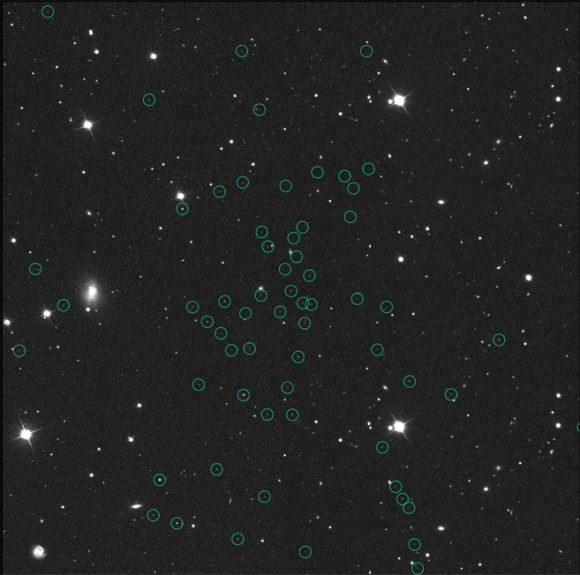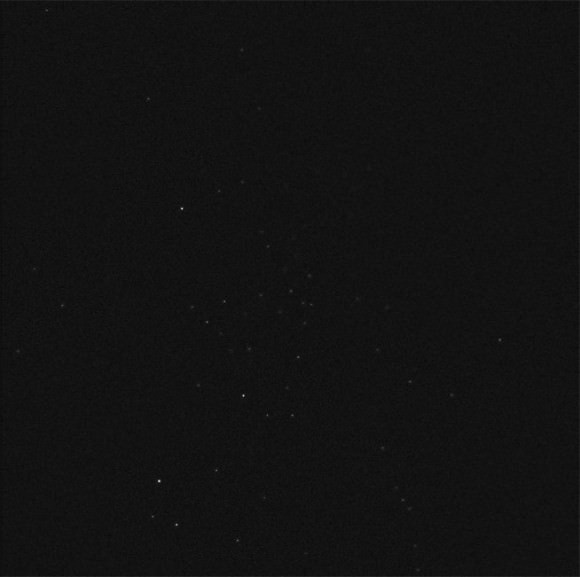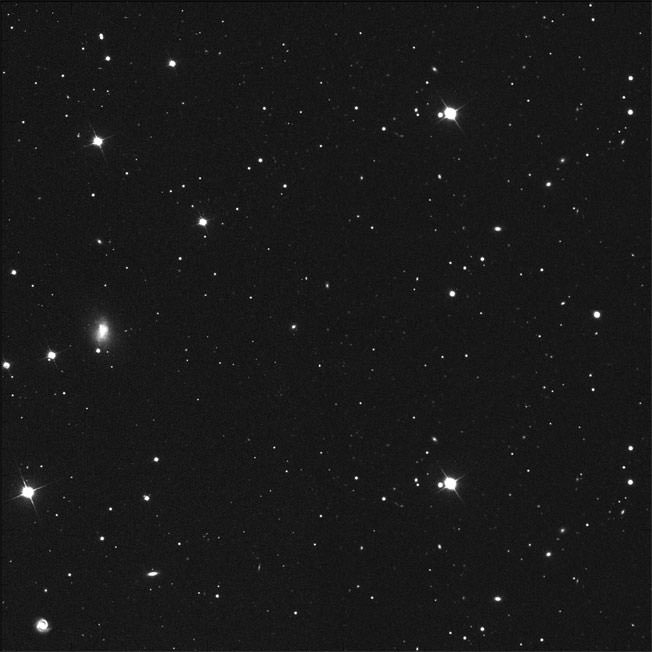[/caption]
Two years ago, Marla Geha, a Yale University astronomer, Joshua Simon from the Carnegie Institution of Washington, and their colleagues discovered something unusual while studying with the Keck II telescope and information for the Sloan Digital Sky Survey. Their observations turned up a contrasting group of stars which all appeared to be moving in unison – not just a moving cluster of similar stars which could have been torn away from the nearby Sagittarius dwarf galaxy. The team knew they were on to something, but a competing group of astronomers at Cambridge University was skeptical. Too bad… there was a dark treasure right there before their eyes.
Not to be dissuaded, Simon, Geha and their group returned to Keck and turned the photographic eye of the telescope’s Deep Extragalactic Imaging Multi-Object Spectrograph (DEIMOS) towards their target area. Even though it was only about 1,000 small, dim stars, they wanted to know how they migrated both in respect to the Milky Way and to each other. Named Segue 1, the target the team was looking at could possibly have 3,400 times more mass than can be accounted for by its visible stars… a galaxy dominated by dark matter and salted with a handful of ancient suns. If the 1,000 or so stars were all there was to Segue 1, with just a touch of dark matter, the stars would all move at about the same speed, said Simon. But the Keck data show they do not. Instead of moving at a steady 209 km/sec relative to the Milky Way, some of the Segue 1 stars are moving at rates as slow as 194 kilometers per second while others are going as fast as 224 kilometers per second.

“That tells you Segue 1 must have much more mass to accelerate the stars to those velocities,” Geha explained. The paper confirming Segue 1’s dark nature appeared in the May 2011 issue of The Astrophysical Journal. “The mass required to cause the different star velocities seen in Segue 1 has been calculated at 600,000 solar masses. But there are only about 1,000 stars in Segue 1, and they are all close to the mass of our Sun,” Simon said. “Virtually all of the remainder of the mass must be dark matter.”
But the information from DEIMOS didn’t stop there… It also revealed an eclectic collection of nearly primordial metal-poor stars. The researchers managed to gather iron data on six stars in Segue 1 with the Keck II telescope, and a seventh Segue 1 star was measured by an Australian team using the Very Large Telescope. Of those seven, three proved to have less than one 2,500th as much iron as the Sun. “That suggests these are some of the oldest and least evolved stars that are known,” said Simon. This is fascinating data considering investigations for stars of this type out of the Milky Way’s billions have produced less than 30. “In Segue 1 we already have 10 percent of the total in the Milky Way,” Geha said. “For studying these most primitive stars, dwarf galaxies are going to be very important.”

By confirming Segue 1’s massive concentration of dark matter, other types of research into this dark galaxy’s lifestyle now become more dedicated. The space-based Fermi Gamma Ray Telescope has also been looking its way in hopes of catching a gamma-ray event created by the collision and annihilation of pairs of dark matter particles. So far the Fermi telescope has not detected anything of the sort, which isn’t entirely surprising and doesn’t mean the dark matter isn’t there, said Simon.
“The current predictions are that the Fermi telescope is just barely strong enough or perhaps not quite strong enough to see these gamma rays from Segue 1,” Simon explained. So there are hopes that Fermi will detect at least the hint of a collision. “A detection would be spectacular,” said Simon. “People have been trying to learn about dark matter for 35 years and not made much progress. Even a faint glow of the predicted gamma rays would be a powerful confirmation of theoretical predictions about the nature of dark matter.”
Let’s hope Segue 1 isn’t alone in the dark.
Original News Source: Keck Observatory Science News.

